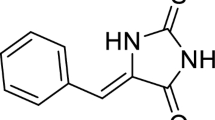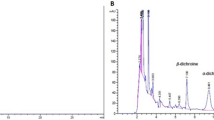Abstract
NEWBORN rats have proved strikingly more susceptible than weanlings to the hepatotoxic action of a single dose of the hepatocarcinogen retrorsine, and also to senkirkine and hydroxysenkirkine (cyclic diesters of otonecine). It is usually accepted that substances which induce principally liver tumours require “activation” by liver microsomal enzymes before they become “proximal” (locally acting) carcinogens. Newborn rats, however, are deficient in enzymes which metabolize drugs, but they are very susceptible to hepatocarcinogens. My work has led me to suggest that the “activated” species of pyrrolizidine alkaloids, aflatoxins and certain other carcinogens are the respective epoxides formed on their chemically reactive double bonds. The microsomal enzymes present in older rats probably accelerate the conversion of the epoxides into less active forms.
This is a preview of subscription content, access via your institution
Access options
Subscribe to this journal
Receive 51 print issues and online access
$199.00 per year
only $3.90 per issue
Buy this article
- Purchase on Springer Link
- Instant access to full article PDF
Prices may be subject to local taxes which are calculated during checkout
Similar content being viewed by others
References
Schoental, R., Nature, 179, 361 (1957).
Schoental, R., Cancer Res., 28, 2239 (1968).
Schoental, R., Israel J. Med. Sci., 4, 1133 (1968).
Bull, L. B., Culvenor, C. C. J., and Dick, A. T., The Pyrrolizidine Alkaloids, Their Chemistry, Pathogenicity and other Biological Properties (North Holland, Amsterdam, 1968).
Schoental, R., and Coady, A., East African Med. J., 45, 577 (1968).
Briggs, L. H., Cambie, R. C., Candy, B. J., O'Donovan, G. M., Russell, R. H., and Seelye, R. N., J. Chem. Soc., 2492 (1965).
Schoental, R., and Magee, P. N., J. Pathol. Bact., 78, 471 (1959).
Schoental, R., J. Pathol. Bact., 77, 485 (1959).
Jago, M. V., Amer. J. Pathol., 56, 405 (1969).
Conney, A. H., Pharmacol. Rev., 19, 317 (1967).
Mattocks, A. R., Nature, 217, 723 (1968).
Talalay, P., Ann. Rev. Biochem., 39, 349 (1965).
Cross, A. D., Quart. Rev., 14, 317 (1960).
Culvenor, C. C. J., Morrison, J. D., Nicholson, A. J. C., and Smith, L. W., Austral. J. Chem., 16, 131 (1963).
Schoental, R., Ann. Rev. Pharmacol., 7, 343 (1967).
Boyland, E., Special Publication No. 5, 40 (edit. by Williams, B. T.) (Chem. Soc., London, 1950).
Jerina, D. N., Daly, J. W., Witkop, B., Zaltzman-Nierenberg, P., and Udenfriend, S., Biochemistry, 9, 147 (1970).
Hendry, J. A., Homer, R. F., Rose, F. L., and Walpole, A. L., Brit. J. Pharmacol., 6, 235 (1951).
van Duuren, B. L., Langseth, L., Orris, L., Baden, M., and Kuschner, M., J. Nat. Cancer Inst., 39, 1213 (1967).
van Duuren, B. L., Langseth, L., Goldschmidt, B. M., and Orris, L., J. Nat. Cancer Inst., 39, 1217 (1967).
Gibbard, S., and Schoental, R., J. Chromatog., 44, 396 (1969).
Author information
Authors and Affiliations
Rights and permissions
About this article
Cite this article
SCHOENTAL, R. Hepatotoxic Activity of Retrorsine, Senkirkine and Hydroxysenkirkine in Newborn Rats, and the Role of Epoxides in Carcinogenesis by Pyrrolizidine Alkaloids and Aflatoxins. Nature 227, 401–402 (1970). https://doi.org/10.1038/227401a0
Received:
Revised:
Issue Date:
DOI: https://doi.org/10.1038/227401a0
This article is cited by
-
In vitro biotransformation of pyrrolizidine alkaloids in different species. Part I: Microsomal degradation
Archives of Toxicology (2018)
-
Herbal Medicines to Avoid
Nature (1972)
-
Arene oxides and the NIH shift: The metabolism, toxicity and carcinogenicity of aromatic compounds
Experientia (1972)
-
Active Metabolites in the Chronic Hepatotoxicity of Pyrrolizidine Alkaloids, including Otonecine Esters
Nature New Biology (1971)
Comments
By submitting a comment you agree to abide by our Terms and Community Guidelines. If you find something abusive or that does not comply with our terms or guidelines please flag it as inappropriate.



